#top 10 richest country in the world
Text
Top 10 Richest Country In The World
Top 10 Richest Country In The World: The world’s richest countries are those that have a high standard of living, a strong economy, and a well-developed infrastructure. They are also typically characterized by low levels of poverty and inequality.
There are several factors that contribute to a country’s wealth, including its natural resources, its economic productivity, and its political…
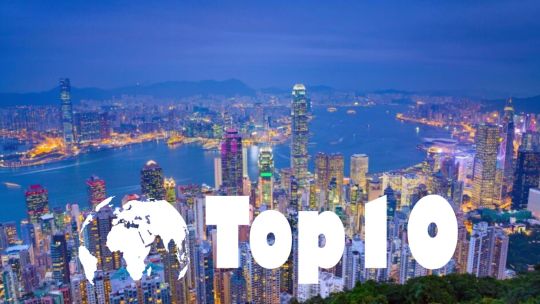
View On WordPress
0 notes
Text
The wealthiest president in US history will be competing for the presidential seat in 2024, what can Americans hope
The wealthiest president in US history will be competing for the presidential seat in 2024, what can Americans hope
The list of American presidents by peak net worth is rather diverse. Presidents’ net value is frequently less than zero after they pass away due to debt and depreciation. Before 1845, the majority of presidents, particularly Andrew Jackson and George Washington, were enormously wealthy and reported as the wealthiest presidents in the US until 2015.
Except for Harry S. Truman, all presidents…
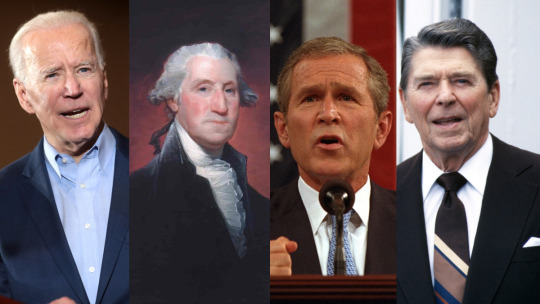
View On WordPress
#richest country in the world#richest man in the world ever#richest people in the world#richest person in the world#richest president#richest president in the world#the most richest president in the world#the richest man in the world#the richest president in the world 2020#the richest president in the world 2021#top 10 richest country in the world#top 10 richest man in the world#top 10 richest people in the world#top 10 richest person in the world#top 100 richest people in the world#top richest man in the world#top ten richest people in the world#wealthiest#wealthiest people in the world#wealthiest president#world richest man list#world richest president 2020
0 notes
Text
Many of the world's richest countries are also the world's smallest:
Some very small and very rich countries—like San Marino, Luxembourg, Switzerland and Singapore benefit from having sophisticated financial sectors and tax regimes that attract foreign investment, professional talent and large bank deposits. Others like Qatar and the United Arab Emirates have large reserves of hydrocarbons or other lucrative natural resources.
THE 10 RICHEST COUNTRIES IN THE WORLD

Click here for read more:
#top 10#top#world most dangerous#richest countries#richest people#top 10 economy#dubai#dubailife#dubaimarina#dubaimall
0 notes
Text
Top 10 Countries With The Highest Number Of Churches
Top 10 Countries With The Highest Number Of Churches
A lot of people are confused about what the countries with the highest number of churches are. The people at this table have asked several questions concerning it. This article is not only going to provide the answer for these people but also give a detailed reason on why those countries appeared on this list.
In every Christian country, there are always a lot of churches. These churches are…

View On WordPress
0 notes
Text
Top 10 Richest Men in Africa and Their Net Worth 2022
Top 10 Richest Men in Africa and Their Net Worth 2022
Top 10 Richest Men in Africa and Their Net Worth 2022
Despite the global coronavirus pandemic, Africa’s wealthiest have become wealthier in the last eight years. The continent’s 18 billionaires are worth an estimated $84.9 billion, up 15% from a year ago and the highest total since 2014, when there were 28 African billionaires; the average net worth is higher this year due to the smaller number…
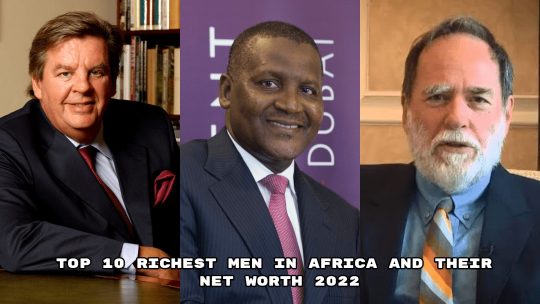
View On WordPress
#Featured#Just In#Picks#richest man in africa#richest man in africa 2021#richest man in africa 2022#richest man in africa 2022 forbes#richest man in africa 2022 top 10#richest man in africa and their country#richest man in africa history#richest man in africa top 10#richest man in africa top 20#richest man in the world#top 10 richest man in africa 2022#top 10 richest man in africa 2022 and their country#top 100 richest people in africa#top 20 richest in africa#top 20 richest man in africa 2022#top 50 richest man in africa 2022#Who is the richest man 2022 Africa?#Who is the top 10 richest in Africa?#Who is the Top 10 Richest Man in Africa in 2022?#Who is the top 5 richest man in Africa?
0 notes
Text
With the exceptions of North Korea and Cuba, the communist world has merged onto the capitalist highway in a couple different ways during the twenty-first century. As you’ve read, free-trade imperialism and its cheap agricultural imports pushed farmers into the cities and into factory work, lowering the global price of manufacturing labor and glutting the world market with stuff. Forward-thinking states such as China and Vietnam invested in high-value-added production capacity and managed labor organizing, luring links from the global electronics supply chain and jump-starting capital investment. Combined with capital’s hesitancy to invest in North Atlantic production facilities, as well as a disinclination toward state-led investment in the region, Asian top-down planning erased much of the West’s technological edge. If two workers can do a single job, and one worker costs less, both in wages and state support, why pick the expensive one? Foxconn’s 2017 plan to build a U.S. taxpayer–subsidized $10 billion flat-panel display factory in Wisconsin was trumpeted by the president, but it was a fiasco that produced zero screens. The future cost of labor looks to be capped somewhere below the wage levels many people have enjoyed, and not just in the West.
The left-wing economist Joan Robinson used to tell a joke about poverty and investment, something to the effect of: The only thing worse than being exploited by capitalists is not being exploited by capitalists. It’s a cruel truism about the unipolar world, but shouldn’t second place count for something? When the Soviet project came to an end, in the early 1990s, the country had completed world history’s biggest, fastest modernization project, and that didn’t just disappear. Recall that Cisco was hyped to announce its buyout of the Evil Empire’s supercomputer team. Why wasn’t capitalist Russia able to, well, capitalize? You’re already familiar with one of the reasons: The United States absorbed a lot of human capital originally financed by the Soviet people. American immigration policy was based on draining technical talent in particular from the Second World. Sergey Brin is the best-known person in the Moscow-to-Palo-Alto pipeline, but he’s not the only one.
Look at the economic composition of China and Russia in the wake of Soviet dissolution: Both were headed toward capitalist social relations, but they took two different routes. The Russian transition happened rapidly. The state sold off public assets right away, and the natural monopolies such as telecommunications and energy were divided among a small number of skilled and connected businessmen, a category of guys lacking in a country that frowned on such characters but that grew in Gorbachev’s liberalizing perestroika era. Within five years, the country sold off an incredible 35 percent of its national wealth. Russia’s richest ended the century with a full counterrevolutionary reversal of their fortunes, propelling their income share above what it was before the Bolsheviks took over. To accomplish this, the country’s new capitalists fleeced the most vulnerable half of their society. “Over the 1989–2016 period, the top 1 percent captured more than two-thirds of the total growth in Russia,” found an international group of scholars, “while the bottom 50 percent actually saw a decline in its income.” Increases in energy prices encouraged the growth of an extractionist petro-centered economy. Blood-covered, teary, and writhing, infant Russian capital crowded into the gas and oil sectors. The small circle of oligarchs privatized unemployed KGB-trained killers to run “security,” and gangsters dominated politics at the local and national levels. They installed a not particularly well-known functionary—a former head of the new intelligence service FSB who also worked on the privatization of government assets—as president in a surprise move on the first day of the year 2000. He became the gangster in chief.
Vladimir Putin’s first term coincided with the energy boom, and billionaires gobbled up a ludicrous share of growth. If any individual oligarch got too big for his britches, Putin was not beyond imposing serious consequences. He reinserted the state into the natural monopolies, this time in collaboration with loyal capitalists, and his stranglehold on power remains tight for now, despite the outstandingly uneven distribution of growth. Between 1980 and 2015, the Russian top 1 percent grew its income an impressive 6.2 percent per year, but the top .001 percent has maintained a growth rate of 17 percent over the same period. To invest these profits, the Russian billionaires parked their money in real estate, bidding up housing prices, and stashed a large amount of their wealth offshore. Reinvestment in Russian production was not a priority—why go through the hassle when there were easier ways to keep getting richer?
While Russia grew billionaires instead of output, China saw a path to have both. As in the case of Terry Gou, the Chinese Communist Party tempered its transition by incorporating steadily increasing amounts of foreign direct investment through Hong Kong and Taiwan, picking partners and expanding outward from the special economic zones. State support for education and infrastructure combined with low wages to make the mainland too attractive to resist. (Russia’s population is stagnant, while China’s has grown quickly.) China’s entry into the World Trade Organization, in 2001, gave investors more confidence. Meanwhile, strong capital controls kept the country out of the offshore trap, and state development priorities took precedence over extraction and get-rich-quick schemes. Chinese private wealth was rechanneled into domestic financial assets—equity and bonds or other loan instruments—at a much higher rate than it was in Russia. The result has been a sustained high level of annual output growth compared to the rest of the world, the type that involves putting up an iPhone City in a matter of months. As it has everywhere else, that growth has been skewed: only an average of 4.5 percent for the bottom half of earners in the 1978–2015 period compared to more than 10 percent for the top .001 percent. But this ratio of just over 2–1 is incomparable to Russia’s 17–.5 ration during the same period.
Since the beginning of the twenty-first century, certain trends have been more or less unavoidable. The rich have gotten richer relative to the poor and working class—in Russia, in China, in the United States, and pretty much anywhere else you want to look. Capital has piled into property markets, driving up the cost of housing everywhere people want to live, especially in higher-wage cities and especially in the world’s financial centers. Capitalist and communist countries alike have disgorged public assets into private pockets. But by maintaining a level of control over the process and slowing its tendencies, the People’s Republic of China has built a massive and expanding postindustrial manufacturing base.
It’s important to understand both of these patterns as part of the same global system rather than as two opposed regimes. One might imagine, based on what I’ve written so far, that the Chinese model is useful, albeit perhaps threatening, in the long term for American tech companies while the Russian model is irrelevant. Some commentators have phrased this as the dilemma of middle-wage countries on the global market: Wages in China are going to be higher than wages in Russia because wages in Russia used to be higher than wages in China. But Russia’s counterrevolutionary hyper-bifurcation has been useful for Silicon Valley as well; they are two sides of the same coin. Think about it this way: If you’re a Russian billionaire in the first decades of the twenty-first century looking to invest a bunch of money you pulled out of the ground, where’s the best place you could put it? The answer is Palo Alto.
Malcolm Harris, Palo Alto
53 notes
·
View notes
Text
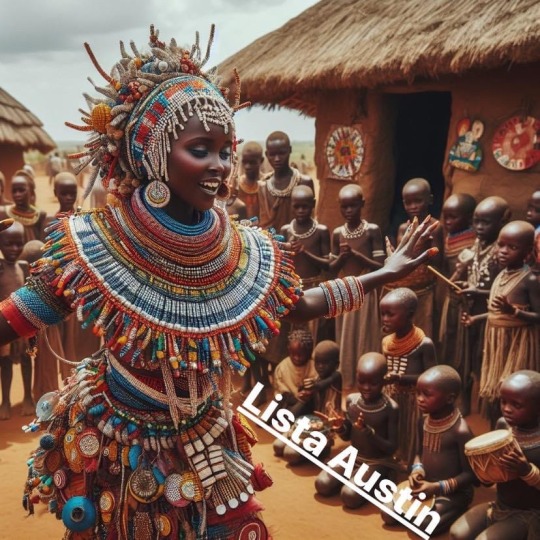
TOP 10 AFRICAN TRIBES/ETHNIC GROUPS THAT ARE GLOBALLY KNOWN.
(In no particular order)
1) Zulu ?? South Africa – The Zulu tribe is popular outside Africa. They’ve been featured in music, documentaries and movies. Shaka the Zulu was a warrior king whose popularity is well spread. Famous Zulus, Lucky Dube, Nasty C, black Coffee etc.
2) Yoruba ?? Nigeria – The Yorubas are globally known for their history, culture, art and literature. Fela, Wole Soyinka, Wizkid, Davido, Tiwa Savage, David Oyelowo, John Boyega, Anthony Joshua etc are a few Yorubas who have taken their culture to the world. The Yoruba culture has been featured in many Hollywood movies.
3) Masai ?? Kenya – The Masai are perhaps one of the most documented tribes in Africa, with alot of documentaries shown about them and books written about their culture.
They are known for their traditional clothing and hunting skills
4) Hausa ?? Nigeria – The hausas are very popular. Often known as the Igbos of the North, The richest black man in the world Aliko Dangote is Hausa along with his brother from the same state Kano Abdulsamad Rabiu (BUA). Their culture has also been well written about and have featured in a few Hollywood movies including the Amazon prime series were a woman was seen eating Tuwo shinkafa.
5) Igbo ?? Nigeria – The Igbos are undeniably known world wide. Chinua Achebe wrote about the Igbo culture alot. They are known for their history, culture and literature.
The popularized the kolanut and palm wine through books, movies and music
Chinwetalu Ejiofor, Zain Asher, Ckay, Flavour, Chimamanda, phyno, P-square are Igbos who have taken their culture to the world. Igbo are known in Nollywood movies.
6) Swahili ?? Tanzania – This tribe have phenomenal spread their language in East Africa and a few central African nations.
In the 70s, their language was part of the African-American black pride movement been pushed forward.
7) Edo/Bini ?? Nigeria – The Binis are perhaps the culture in Africa with the most famous artworks outside Egypt.
Binis are known for their history, culture and art/architecture.
The famous Benin bronze, ivory and brass artworks are known globally. The country Benin republic gets their name from them. Benin art and culture have been featured in Hollywood movies including black panther. Many Nigerian cultures have roots in Benin. The bronze mask of Queen Idia is perhaps the most famous mask in Africa and one of the most famous in the world. Popular Edos are Kamaru Usman, Rema, Odion Jude Ighalo, Victor Osimhen, Dave, Sam Loco Efe etc.
Asante Ghana – This tribe are known for their history and culture. Popular American hip hop artist was named after this tribe Asante. Their Kente is perhaps the most popular African attire outside of Africa and were known to be masters of the gold craft.
9) The Fulani – This nomadic tribes are known for their history and culture. They are predominantly in West Africa and are found in 18 African countries. Most In Nigeria ??
Popular Fulanis or people with Fulani ancestry are Muhammadu and Aisha Buhari, Tafawa Balewa,
10) Berbers/Amazigh – They are predominantly found in North Africa. They are predominantly found in Morocco ?? and Algeria ?? They known for their use of silver silver. Their culture and history well documented and have a unique language and writing system that traces back to ancient Egypt. Books are currently being written about them including a book titled salt by Haitian-American Pascaline Brodeur.
Disclaimer: Every African tribe and culture is beautiful, unique and important. No one culture is more important than the other. This only highlights tribes known outside the continent overall, this doesn’t mean there aren’t other cultures that aren’t known.
PLEASE YOU CAN ADD AND TELL US ABOUT YOUR TRIBE.
37 notes
·
View notes
Text
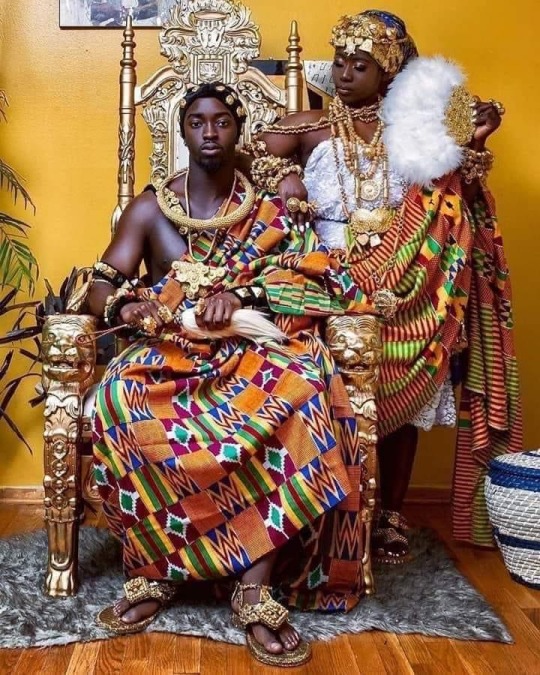
Facts about Ghana in West Africa 🇬🇭 You may not know:
1. Ghana 🇬🇭 passp0rt is ranked 4th as the most powerful passp0rt in West Africa. Source: Bennjamindada.com
2. Most number of best sec0ndary schools in west africa, Ghana 🇬🇭top the list.
3. Best infrastructure In West Africa ranked by Africa Infrastructure Development Index(AIDI) , Ghana is the second best after Cape verde In West Africa.
4. Ghana🇬🇭 is ranked the most peaceful country in west Africa.
5. Ghana🇬🇭 has the 2nd biggest economy in west Africa after Nigeria 🇳🇬.
6. Ghana 🇬🇭 cedi ranked as the strongest currency in West Africa. (Strongest is different from Best Performing)
7. The largest port in west and central Africa is found in Ghana🇬🇭 (Tema port). 2020
8. The best Airport in west Africa is found in Ghana 🇬🇭 " Kotaka international Airport".
9. Ghana 🇬🇭 and cape verde are the only c0untries in wèst ranked with middle-best quality of life.
10 Accra🇬🇭 is the best place to move to In west Africa and the most visited place in West Africa , also the second richest city in west after Lagos.
11. Ghana 🇬🇭 is West Africa country with highest Eur0peans p0pulation.
12. Largest Social Science faculty building in west is found in Ghana, KNUST.
13. Biggest mall in west Africa is in Ghana 🇬🇭, West Hills malls and Ghana International Mall.
14. Biggest artificial lake in the world, lake Volta is in Ghana 🇬🇭.
15. Biggest indoor market, Kumasi Central market is Ghana 🇬🇭.
16. Biggest hotel in Africa, the rock city hotel is Ghana 🇬🇭
17. Biggest interchanges in West Africa, Pokuase Interchange is in Ghana 🇬🇭.
18. Longest canopy walk way at Peninsula Resort is in Ghana 🇬🇭.
19. Best Beaches ⛱ are in Ghana.
20. Biggest dam in West Africa is Ghana 🇬🇭.
21. Largest drone delivery system in the world is Ghana 🇬🇭.
22. Ghana has the highest percentage of people having access to elèctricity (85%) and wàter💧.
56 notes
·
View notes
Text
The world’s richest 10% encompasses most of the middle classes in developed countries – anyone paid more than about $40,000 (£32,000) a year. The lavish lifestyles of the very rich – the 1% – attract attention. But the 10% are responsible for half of all global emissions, making them key to ending the climate crisis. ...
Transport, especially car use, is a major factor in the sky-high emissions of the richest 10%, with these emissions 20-40 times higher than the transport emissions of the poorest 10% in the countries analysed. ...
Another major factor is the emissions embodied in the goods that people buy, such as furniture and electronics. These are 20-50 times higher for the richest 10%, and make up about a third of emissions in most countries. ...
Globally, the top 10% by income totals 770 million people, with almost two-thirds in high-income countries. ...
A blanket approach by governments to shift to green lifestyles unfairly disadvantaged the poorest in society and undermined trust. “Policy sticks, such as taxation, should only be used to target those who have capacity to make cuts, ie those who are better off, whereas policy carrots, such as subsidies and support for lifestyle change, are needed for those who are unfairly burdened at the moment by rising fuel and food prices.” ...
An international taxation taskforce is due to launch at Cop28 to push for new climate levies and will consider taxes on wealth, fossil fuels, shipping, aviation and financial transactions.
Townend said: “Rich lifestyles can change to reduce emissions without damaging wellbeing. What matters most to people is our relationships with others and our ability to be social, and those things aren’t carbon intensive to enjoy or maintain.”
33 notes
·
View notes
Text
Ministers of Germany, Brazil, South Africa and Spain: why we need a global tax on billionaires
Finance chiefs say higher taxes for the super-rich are key to battling global inequality and climate crisis

When the governors of the World Bank and the International Monetary Fund convened for the spring meetings last week, it was all about the really big questions. What can the international community do to accelerate decarbonisation and fight climate change? How can highly indebted countries retain fiscal space to invest in poverty eradication, social services and global public goods? What does the international community need to do to get back on track towards reaching the Sustainable Development Goals (SDGs)? How can multilateral development banks be strengthened to support these ambitions?
There is one issue that makes addressing these global challenges much harder: inequality. While the disparity between the richest and poorest countries has slightly narrowed, the gap remains alarmingly high. Moreover, in the past two decades, we have witnessed a significant increase in inequalities within most countries, with the income gap between the top 10% and the bottom 50% nearly doubling. Looking ahead, current global economic trends pose serious threats to progress towards higher equality.
The multidimensional character of inequality is undeniable. Basic services such as healthcare and education are not equally available to all. Often, this inequality of opportunity is handed down from generation to generation. Social origins, gender, race or where people live are some of the factors that play a role in reproducing inequalities. Furthermore, high inequality harms economic development because it inhibits innovation and prevents people from developing their full potential. It is corrosive to democracy and weakens social cohesion. And where social cohesion is weak, there is less support for the structural reforms we will need to undertake in the coming years, such as the necessary transformation towards a net zero economy.
Fortunately, there is a growing global awareness of the importance not only of growth, but of sustainable and equitable growth. Increasing prosperity while tackling inequality within and across countries and generations, including entrenched race and gender inequalities, should not be at odds. Achieving truly sustainable growth lies in balancing three fundamental concerns: economic, social, and environmental.
Continue reading.
#brazil#politics#spain#germany#south africa#economy#fernando haddad#brazilian politics#taxation#Svenja Schulze#Enoch Godongwana#Maria Jesus Montero#Carlos Cuerpo#mod nise da silveira#image description in alt
11 notes
·
View notes
Text
It was the most spectacular trial ever held in Vietnam, befitting one of the greatest bank frauds the world has ever seen.
Behind the stately yellow portico of the colonial-era courthouse in Ho Chi Minh City, a 67-year-old Vietnamese property developer was sentenced to death on Thursday for looting one of the country's largest banks over a period of 11 years.
It's a rare verdict - she is one of very few women in Vietnam to be sentenced to death for a white collar crime.
The decision is a reflection of the dizzying scale of the fraud. Truong My Lan was convicted of taking out $44bn (£35bn) in loans from the Saigon Commercial Bank. The verdict requires her to return $27bn, a sum prosecutors said may never be recovered. Some believe the death penalty is the court's way of trying to encourage her to return some of the missing billions.
The habitually secretive communist authorities were uncharacteristically forthright about this case, going into minute detail for the media. They said 2,700 people were summoned to testify, while 10 state prosecutors and around 200 lawyers were involved.
The evidence was in 104 boxes weighing a total of six tonnes. Eighty-five others were tried with Truong My Lan, who denied the charges and can appeal.
All of the defendants were found guilty. Four received life in jail. The rest were given prison terms ranging from 20 years to three years suspended. Truong My Lan's husband and niece received jail terms of nine and 17 years respectively.
"There has never been a show trial like this, I think, in the communist era," says David Brown, a retired US state department official with long experience in Vietnam. "There has certainly been nothing on this scale."
The trial was the most dramatic chapter so far in the "Blazing Furnaces" anti-corruption campaign led by the Communist Party Secretary-General, Nguyen Phu Trong.
A conservative ideologue steeped in Marxist theory, Nguyen Phu Trong believes that popular anger over untamed corruption poses an existential threat to the Communist Party's monopoly on power. He began the campaign in earnest in 2016 after out-manoeuvring the then pro-business prime minister to retain the top job in the party.
The campaign has seen two presidents and two deputy prime ministers forced to resign, and hundreds of officials disciplined or jailed. Now one of the country's richest women has joined their ranks.
Truong My Lan comes from a Sino-Vietnamese family in Ho Chi Minh City, formerly Saigon. It has long been the commercial engine of the Vietnamese economy, dating well back to its days as the anti-communist capital of South Vietnam, with a large, ethnic Chinese community.
She started as a market stall vendor, selling cosmetics with her mother, but began buying land and property after the Communist Party ushered in a period of economic reform, known as Doi Moi, in 1986. By the 1990s, she owned a large portfolio of hotels and restaurants.
Although Vietnam is best known outside the country for its fast-growing manufacturing sector, as an alternative supply chain to China, most wealthy Vietnamese made their money developing and speculating in property.
All land is officially state-owned. Getting access to it often relies on personal relationships with state officials. Corruption escalated as the economy grew, and became endemic.
By 2011, Truong My Lan was a well-known business figure in Ho Chi Minh City, and she was allowed to arrange the merger of three smaller, cash-strapped banks into a larger entity: Saigon Commercial Bank.
Vietnamese law prohibits any individual from holding more than 5% of the shares in any bank. But prosecutors say that through hundreds of shell companies and people acting as her proxies, Truong My Lan actually owned more than 90% of Saigon Commercial.
They accused her of using that power to appoint her own people as managers, and then ordering them to approve hundreds of loans to the network of shell companies she controlled.
The amounts taken out are staggering. Her loans made up 93% of all the bank's lending.
Vietnam secret document warns of 'hostile forces'
US denies Cold War with China in historic Vietnam visit
The country where Kissinger left a legacy of death and chaos
According to prosecutors, over a period of three years from February 2019, she ordered her driver to withdraw 108 trillion Vietnamese dong, more than $4bn (£2.3bn) in cash from the bank, and store it in her basement.
That much cash, even if all of it was in Vietnam's largest denomination banknotes, would weigh two tonnes.
She was also accused of bribing generously to ensure her loans were never scrutinised. A former chief inspector at the central bank was given a life sentence for accepting a $5m bribe.
The mass of officially sanctioned publicity about the case channelled public anger over corruption against Truong My Lan, whose fatigued, unmade-up appearance in court was in stark contrast to the glamorous publicity photos people had seen of her in the past.
But questions are also being asked about why she was able to keep on with the alleged fraud for so long.
"I am puzzled," says Le Hong Hiep who runs the Vietnam Studies Programme at the ISEAS - Yusof Ishak Institute in Singapore.
"Because it wasn't a secret. It was well known in the market that Truong My Lan and her Van Thinh Phat group were using SCB as their own piggy bank to fund the mass acquisition of real estate in the most prime locations.
"It was obvious that she had to get the money from somewhere. But then it is such a common practice. SCB is not the only bank that is used like this. So perhaps the government lost sight because there are so many similar cases in the market."
David Brown believes she was protected by powerful figures who have dominated business and politics in Ho Chi Minh City for decades. And he sees a bigger factor in play in the way this trial is being run: a bid to reassert the authority of the Communist Party over the free-wheeling business culture of the south.
"What Nguyen Phu Trong and his allies in the party are trying to do is to regain control of Saigon, or at least stop it from slipping away.
"Up until 2016 the party in Hanoi pretty much let this Sino-Vietnamese mafia run the place. They would make all the right noises that local communist leaders are supposed to make, but at the same time they were milking the city for a substantial cut of the money that was being made down there."
At 79 years old, party chief Nguyen Phu Trong is in shaky health, and will almost certainly have to retire at the next Communist Party Congress in 2026, when new leaders will be chosen.
He has been one of the longest-serving and most consequential secretary-generals, restoring the authority of the party's conservative wing to a level not seen since the reforms of the 1980s. He clearly does not want to risk permitting enough openness to undermine the party's hold on political power.
But he is trapped in a contradiction. Under his leadership the party has set an ambitious goal of reaching rich country status by 2045, with a technology and knowledge-based economy. This is what is driving the ever-closer partnership with the United States.
Yet faster growth in Vietnam almost inevitably means more corruption. Fight corruption too much, and you risk extinguishing a lot of economic activity. Already there are complaints that bureaucracy has slowed down, as officials shy away from decisions which might implicate them in a corruption case.
"That's the paradox," says Le Hong Hiep. "Their growth model has been reliant on corrupt practices for so long. Corruption has been the grease that that kept the machinery working. If they stop the grease, things may not work any more."
11 notes
·
View notes
Text
My D&D Party Nonsense

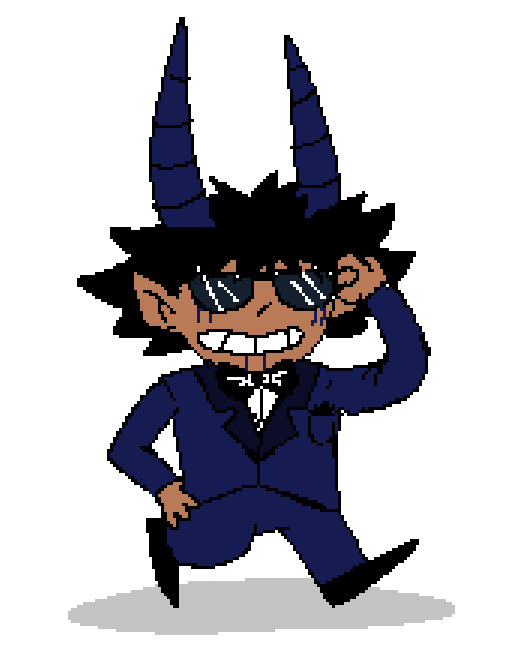
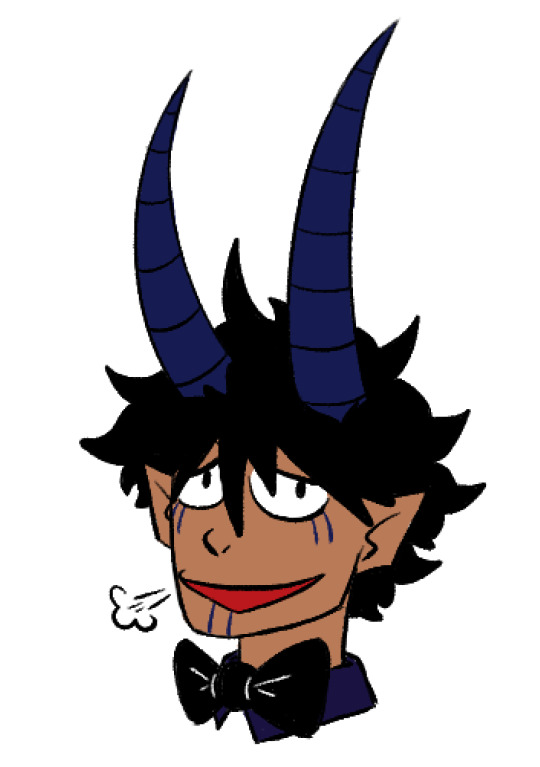
Amon Leonech:
A Tiefling/Changeling Warlock of Nyarlathotep
Amon embodies a true rags to riches story, going from a homeless urchin in a dirty trench coat, to a suave business tycoon and is the most unpredictable and dangerous being you should hope to never get involved with, because if you do he'll either scam you, put you in crippling debt, or just straight up kill you.
Amon took many forms throughout the campaign and got up to a metric fuck ton of morally questionable shenanigans, throughout the campaign, he did the following.
-Slaughtered thousands of goblins in a single day
-Committed several acts of violent manslaughter
-Used his adventuring spoils to purchase a large plot of land and made an apple orchard (He likes apples)
-Made a contract with a spectator named Specky (Pictured above) to run his orchard for him so he could focus on adventuring
-Got turned into a smoldering corpse and came back as a host for the lich lord Acererak (We fixed that problem like two weeks later)
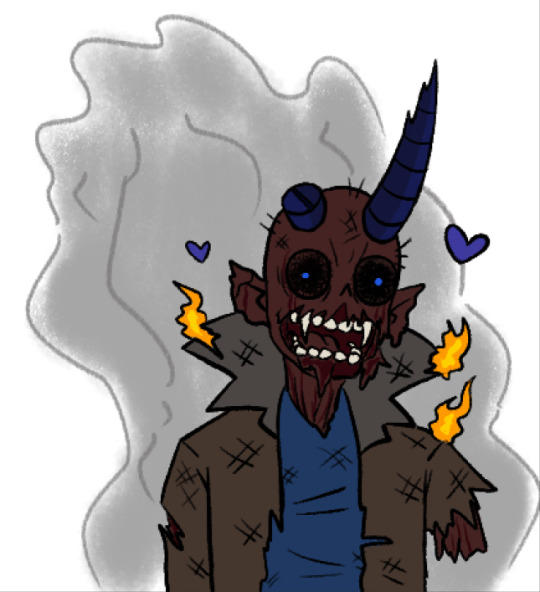
(Smoldering corpse Amon pictured above)
-Became one of the top ten richest people in the world from selling the wine he made with the apples from his massive orchard. (He REALLY likes apples)
-Terraformed a time dilated pocket dimension (10 minutes outside of the pocket dimension is equivalent to 1 year inside) and left two baboons in it to "see what would happen", which lead to Amon having an entire hyper advanced isolated society sitting in his backpack, which he would check in on every few days.


Throughout his adventures, Amon also turned his Pact weapon (A Halberd called Brimstone) into one of the most powerful magic weapons in all the planes of existence. Brimstone was a sentient weapon too, but they had a much healthier relationship than Wulfram and Dra'ak.
Amon also became a decent parent/caretaker through trial and error. Over the span of the campaign, Amon collected various pets and had several children through unorthodox means.
-Amon and another party member adopted a little orphan girl they had saved early on in the campaign, but she was very neglected after the other party member's tragic death.
-Amon found a little talking monkey skeleton made out of Tarrasque sperm, which he neglected less than the orphan girl, but mainly because it served a purpose in combat.
-Amon got a disabled kraken baby, two unique dragon mounts and a sky bison, all of which were left in various places and completely forgotten about.
-Amon also ate the eyes of two separate beholders and birthed these beholders in new humanoid bodies, one was evil and tried to kill him, the other was chill and now has a wife and travels with a different party while taking care of the anti-christ
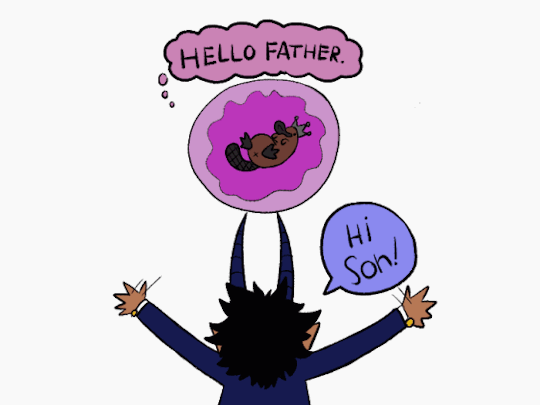
Without a doubt, Amon's most successful and undeniably favorite of his children / pets was the baby platypus he purchased at a Petsmart he visited while the part was stuck 4,000 years in the past. This platypus was one of the last of it's kind and in the time it was with Amon, it was given a magic crown that made it immortal and granted it psionic powers and heightened intelligence.
Amon also went to the prison planet of Minethys when he died for the third time. Minethys is the afterlife for People consumed by greed and a lust for power, and Amon was somehow able to outmatch the greed of all the other denizens of this afterlife and become the defacto-ruler of the planet after killing all the previous ones in a 1,000 year war of attrition.
After the rest of the party retrieved him from his afterlife turned capitalist paradise, he became a god with the help of a ritual performed by his Platypus son who had spent the last 4,000 years gathering followers for his father to prepare for this ritual.
He later lost his godhood, becoming mortal again, but still ridiculously powerful.
After the final climactic battle of the campaign, Amon focused all his efforts into taking his orchard (which was now the size of a small country) and suspending it in the sky, in order to separate it from the rest of the world's squabbles. making it a peaceful sovereign nation for him and his denizens who still worshipped him like a god, even though he no longer was, mechanically speaking at least.
5 notes
·
View notes
Text
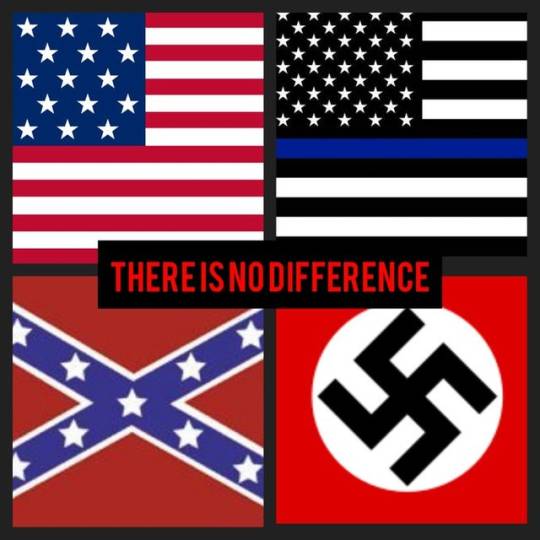
Amerikkka, the beautiful, the land of the free & the home of the...
👁Highest obesity rates
👁Highest gun mortality
👁Highest opioid use, addiction & fatalities
👁Most overprescribed nation on earth
👁One of the highest prescription rates for antidepressants & benzodiazepines
👁One of the highest rates of domestic violence
👁One of the richest countries yet highest incidence of poverty among "advanced democracies" - millions are houseless, food insecure, without medical insurance & lack of a living wage
👁Work hundreds of more hours vs employees in other "developed" countries
👁Excessive environmental abuse (biggest carbon emitter - 3 times worse than China, 2nd in air pollution only to China, water pollution, landfills, food waste, deforestation, natural resource depletion, industrial destruction, destruction of ecosystems, species conservation, deforestation, nuclear accidents, overpopulation, etc.)
👁National obsession with status, consumerism, materialism, overconsumption, fast fashion & addiction to shopping
👁One of the top economies but has a record high of $17.1 trillion in individual debt (student loans, mortgage, auto & credit card)
👁One of the highest costs of living in the world (housing, healthcare, and education)
👁60% of food consumed in US contains additives, preservatives & artificial sweeteners, considerably higher than the rest of the world
👁Tens of thousands of toxic chemicals & synthetics in household, cleaning, body care, makeup products with very little testing, regulations or studies on health and environmental effects
👁Hypersexualized, "pornified" culture that glamorizes sexual objectification, sexual violence & dehumanization while also being sexually repressed, uneducated, unable to establish, determine or decide on boundaries or verbalize when they have been violated, toxic masculinity, rape culture, inability to verbalize desires, inability to discuss sexuality openly and honestly, unhealthy, forced & contrived repression that leads to fetishization, dehumanization, objectification, sex addiction, etc
👁70% of teens & young adults are addicted to social media
👁Over 90% of time in America is spent indoors -- complete & total disconnect with nature
👁Only 7% of Americans practice mindful meditation -- total mind/body disconnect
👁Americans are obessed with "exercise", "the gym", "being fit", "bikini bodies" & "fad diets" yet only 20% work out regularly and the US has the highest obesity rates in the world
👁Dystopian obsession with beauty with the worlds highest plastic surgery rates
👁One of the 10 worst countries for racial equity
👁One of the most paternalistic & patriarchal countries on earth
👁Religious fundamentalism & paternalism is embedded in all aspects of society & culture & wielded as a tool of control
👁Concepts and societal ideals of femininity, motherhood, paternalism, fundamentalism, conservatism, religious dogma, chastity, modesty, purity, the cult of woman as a sacrificial lamb and the mother as a dehumanized symbol of selflessness and sublimation are all used to control and deny women's bodily autonomy and reproductive freedom while poverty is feminized and more women than men in the US live in poverty, work minimum and low wage jobs, are overrepresented in service jobs, make less per dollar than men for the same work and have no access to paid maternity leave or universal childcare yet they are the ones in many states forced to have children they dont want, many as single mothers, with little or no social safety net with no exception depending on the state for rape, abusive partner, coercive partner, mental & physical health of the woman, the woman's childfree or antinatalist beliefs, the woman's employment status, whether she has health care, whether she has a phobia of pregnancy and/or childbirth, whether she would be traumatized being forced to give birth if she doesn't want to be a mother, when it is her livelihood, career, finances, living situation, body, mental and physical health, physical appearance, sexual health affected moving forward if she does give birth yet the choice in many states is taken away from her yet only the woman has to live with the consequences, never the lawmakers taking her choice away
👁Prison industrial, military industrial, psychiatric industrial, pharamaceutical industrial, medical industrial & educational industrial complexes
👁Obsession with graphically violent media (movies, TV shows, videogames) & combat sports (NFL, UFC, etc.) yet boobs, penises & vulvas cant be shown on TV and dropping the F word can get you fined by the FTC
#poverty#gender abolition#abolish the police#prison abolition#police abolition#houselessness#living wage#gun law#gun violence#obesity#opiods#opiod crisis#opiod epidemic#legalize#black lives matter#big pharma#antidepressants#benzodiazepine#benzo addiction#intimate partner violence#food insecurity#corporate greed#climate crisis#climate change#anti capitalism#consumerism#universal healthcare#free college#toxic masculinity#american dystopia
8 notes
·
View notes
Text
Top 10 Most Poorest Countries In The World 2022
Top 10 Most Poorest Countries In The World 2022
Top 10 Most Poorest Countries In The World 2022
It is exciting to research the world’s richest countries, but it is also necessary to research the world’s poorest countries. This is because the United Nations wishes to assist poorer countries in improving the overall quality of life for their citizens.
The World Bank’s four-tiered ranking system classifies the world’s poorest countries as…

View On WordPress
#20 poorest country in the world 2021#Featured#Just In#most poorest country 2021#most poorest country in the world 2018#Picks#poorest country in the world 2022 wikipedia#richest country in the world#top 10 most poorest countries in the world#top 10 most poorest country in the world#top 10 most poorest country in the world 2021#top 10 poorest countries in the world 2020#top 10 poorest countries in the world 2021#top 10 poorest country 2021#top 100 poorest country in the world 2022#top 20 poorest countries in the world#top 20 poorest countries in the world wikipedia#top 20 poorest country in africa#What are the 20 poorest country in Africa?#what are the 25 poorest country in the world#What are the top ten poorest countries of the world 2022?#What is the poorest country in Asia 2022?#Which country is No 1 poorest country?#world poorest country 2022#world poorest country in asia
0 notes
Text

10 facts about the Yoruba tribe in West Africa.
1) Yoruba are the most educated people in west Africa, and they have the first university and many other first infrastructures like skyscrapers, Media, and others.
2) Yoruba has the highest number of twins not only in West Africa but in the world.
3) Yoruba has the highest number of top-notch celebrities, not only in West Africa but in Africa as a whole.
4) The combined GDP of six Yoruba states is richer than all the countries in west Africa.
5) The Yoruba music and movie industry is the richest and biggest in West Africa.
6) The Yoruba language is the second most widely spoken indigenous language in west Africa and the first most widely spoken language outside the African continent.
7) Yoruba has the highest number of millionaires and billionaires in West Africa.
8) Yoruba won the highest number of local and international awards in West Africa and Africa at large.
9) Yoruba has the highest number of manufacturers and company owners in West Africa.
10) Yoruba women are the most successful in West Africa in all sectors. A Yoruba woman, Alakija, is the richest woman in West Africa and Africa at large.
17 notes
·
View notes
Text
“You hear it in every political speech, “vote for me, we’ll get the dream back.” They all reiterate it in similar words—you even hear it from people who are destroying the dream, whether they know it or not. But the “dream” has to be sustained, otherwise how are you going to get people in the richest, most powerful country in world history, with extraordinary advantages, to face the reality that they see around them? Inequality is really unprecedented. If you look at total inequality today, it’s like the worst periods of American history. But if you refine it more closely, the inequality comes from the extreme wealth in a tiny sector of the population, a fraction of 1 percent. There were periods like the Gilded Age in the 1890s and the Roaring Twenties and so on, when a situation developed rather similar to this, but the current period is extreme. Because if you look at the wealth distribution, the inequality mostly comes from super-wealth—literally, the top one-tenth of a percent are just super-wealthy. This is the result of over thirty years of a shift in social and economic policy. If you check you find that over the course of these years the government policy has been modified completely against the will of the population to provide enormous benefits to the very rich. And for most of the population, the majority, real incomes have almost stagnated for over thirty years. The middle class in that sense, that unique American sense, is under severe attack. A significant part of the American Dream is class mobility: You’re born poor, you work hard, you get rich. The idea that it is possible for everyone to get a decent job, buy a home, get a car, have their children go to school . . . It’s all collapsed.”
― Noam Chomsky, Requiem for the American Dream: The 10 Principles of Concentration of Wealth & Power
7 notes
·
View notes